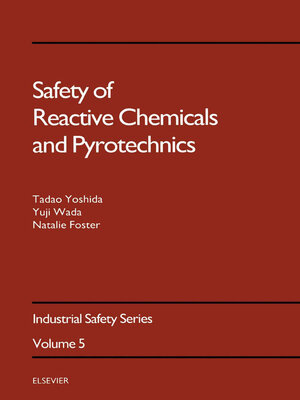
Sign up to save your library
With an OverDrive account, you can save your favorite libraries for at-a-glance information about availability. Find out more about OverDrive accounts.
Find this title in Libby, the library reading app by OverDrive.



Search for a digital library with this title
Title found at these libraries:
| Library Name | Distance |
|---|---|
| Loading... |
Accidents involving reactive chemicals can often be prevented, or their effects alleviated, if those handling them have a sound knowledge both of their hazardous properties and of appropriate handling methods. This book addresses this need.It opens with a definition of the key technical terms and evaluation methods for hazardous materials are outlined. Chapter 2 covers accidents involving self-reactive substances, accidents occurring during chemical reactions, and accidents involving hazardous products in the event of an earthquake. In the next three chapters, methods for evaluating fire and explosion hazards of reactive substances are covered. The test methods described include DSC test using a sealed cell, impact sensitivity tests, the ignitability test, burning tests, the pyrolytic severity test, and shock sensitivity tests. Recently, the Japanese Fire Services Law was amended, requiring hazardous materials to be evaluated and classified by appropriate tests. These test methods, described in chapter 4, are related to oxidising solids, combustible solids, spontaneous ignition substances, and water-reactive substances. The final chapter gives examples of the safety assessment of various pyrotechnics.There are few books available on this subject and none so comprehensive. Each of the methods described is practical, effective and of low cost; and many of the application results are from the author's own laboratory. The book will be invaluable to those in public and industrial safety laboratories, R & D chemical laboratories, Fire Departments, explosives manufacturers, and those responsible for the transportation of hazardous materials.







